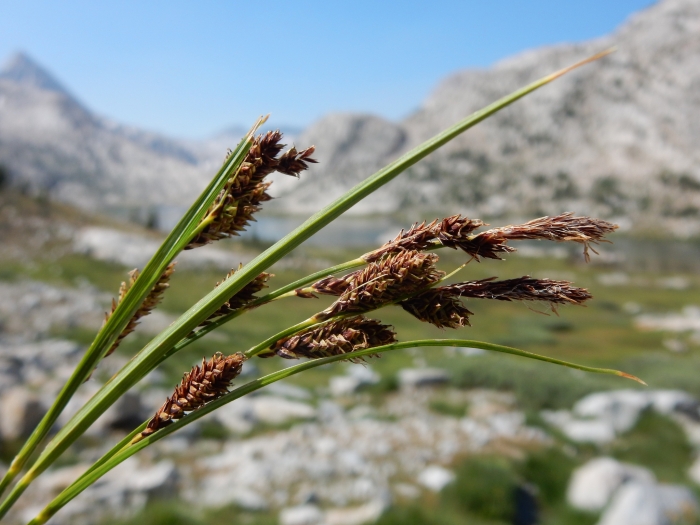Woodrush Sedge
(Carex luzulina)
Woodrush Sedge (Carex luzulina)
/
/

Matt Lavin
CC BY 4.0
Image By:
Matt Lavin
Recorded By:
Copyright:
CC BY 4.0
Copyright Notice:
Photo by: Matt Lavin | License Type: CC BY 4.0 | License URL: http://creativecommons.org/licenses/by/4.0/ | Rights Holder: Matt Lavin | Publisher: iNaturalist | Date Created: 2018-07-28T11:01:56-07:00 |

























Estimated Native Range
Summary
Carex luzulina, commonly known as woodrush sedge, is a perennial herb native to moist, open habitats such as wet meadows, stream banks, and forest clearings in western North America, from British Columbia to California and east to Wyoming. It typically forms loose to dense clumps reaching up to 35 inches in height, with rhizomatous stems that spread to form colonies. The plant’s inflorescence is composed of a few flower spikes, each with dark-colored scales, and the fruit is enveloped in a sac-like structure called a perigynium, which is usually greenish with some dark purple coloration. The flowering season occurs in late spring to early summer, and while the flowers are not particularly showy, they add a subtle texture to the landscape.
Woodrush sedge is valued for its ability to thrive in wet conditions and is often used in rain gardens, riparian plantings, and as a naturalizing element in moist garden areas. It is relatively low maintenance, requiring minimal care once established. For successful cultivation, it prefers consistently moist to wet soils and can tolerate a range of light conditions from full sun to part shade. While it is not known for significant problems with diseases or pests, it can spread vigorously in ideal conditions, potentially becoming aggressive in garden settings.CC BY-SA 4.0
Woodrush sedge is valued for its ability to thrive in wet conditions and is often used in rain gardens, riparian plantings, and as a naturalizing element in moist garden areas. It is relatively low maintenance, requiring minimal care once established. For successful cultivation, it prefers consistently moist to wet soils and can tolerate a range of light conditions from full sun to part shade. While it is not known for significant problems with diseases or pests, it can spread vigorously in ideal conditions, potentially becoming aggressive in garden settings.CC BY-SA 4.0
Plant Description
- Plant Type: Grass
- Height: 1-2 feet
- Width: 1-1.5 feet
- Growth Rate: Slow
- Flower Color: N/A
- Flowering Season: Spring, Summer, Fall
- Leaf Retention: Deciduous
Growth Requirements
- Sun: Full Sun, Part Shade
- Water: High
- Drainage: Fast, Medium, Slow
Common Uses
Bird Garden, Border Plant, Deer Resistant, Erosion Control, Low Maintenance, Rabbit Resistant
Natural Habitat
Moist, open habitats such as wet meadows, stream banks, and forest clearings
Other Names
Common Names: Woodland Sedge, Spring Sedge, Wingseed Sedge, Luzula-like Sedge
Scientific Names: , Carex luzulina,
GBIF Accepted Name: